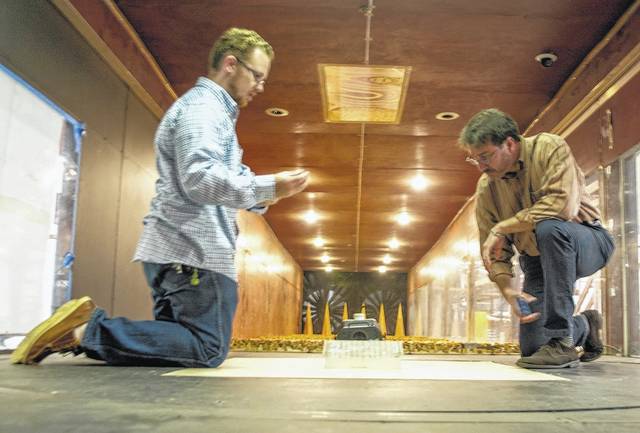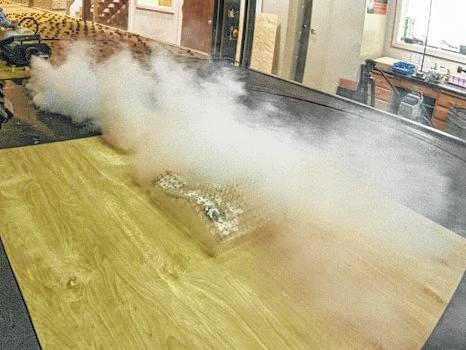CLEMSON — In a nondescript industrial steel building not far from Clemson University’s main campus, civil engineers fire two-by-four lumber out of an air cannon and test model buildings in a 50-mph wind tunnel to study the damaging effects of high-speed winds, like those created by tornadoes and by hurricanes Harvey and Irma.
By measuring wind pressures and the structural integrity of building designs, the engineers at the Wind Load Test Facility can inform construction codes and building methods so structures, from homes to hospitals, are safer and more secure.
“The research conducted in the Wind Load Test Facility will directly benefit society,” says Weichiang Pang, associate professor of civil engineering at Clemson and a specialist in the structural reliability of buildings.
In 2014, Pang was called to the Philippines to survey damage from Typhoon Haiyan, also called Super Typhoon Yolanda, the deadliest typhoon to ever hit the Philippines, killing more than 6,300 people.
“I have seen first-hand the devastation winds can create,” Pang said. “Lives are lost in buildings that cannot withstand Mother Nature, and as the climate continues to change and we see larger, more destructive storms, it’s more important than ever to understand how wind impacts construction.”
The most vulnerable parts of a building are the corners, according to Bill Ashman, a Clemson civil engineering doctoral candidate from Nevada.
Clemson has one of the largest atmospheric boundary wind tunnels in the country. It allows engineers to stratify winds to more accurately mimic atmospheric conditions. Ashman climbs inside the rectangular tunnel – 9.5 feet wide, 7 feet high and 100-feet long – and aims it at a model of a home made from clear plastic and studded with dozens of tiny sensors.
Ashman plugs in a smoke machine, like those used at concerts for special effects, and two giant fans at one end of the tunnel blow the smoke toward the model, wrapping it in vapors.
“You can see in the smoke demonstration little spirals on the corners. Those spirals create negative pressure that will literally pull the sheathing or the shingles off your house.”
Outside, behind the building, a large air cannon aims at a wall some 40 feet away. Ashman loads a common two-by-four into the cannon’s barrel and turns on an air compressor, building pressure to about 60 pounds-per-square-inch, enough to shoot the stud out at 100 mph.
The cannon itself is impressive, but engineers are focused on its targets. Pang, Ashman and others intentionally fire at new building materials to see how well they stand up to projectiles blown around in tornadoes and hurricanes.
Extremely high winds peel buildings apart layer by layer, starting with the roofing material. “Roofs break apart and turn into missiles, essentially, that damage other buildings,” Ashman said.
One of the materials being tested at the Wind Load Test Facility is cross-laminated timber, layers of lumber oriented at right angles to each other and glued together. The material could be a much lighter, cost-effective and environmentally friendly alternative to concrete, Ashman said.
For his doctoral research, Ashman uses models to study if cross-laminated timber can be used to construct balconies on low-rise hotels.
“You can think of the balcony as a wing,” Ashman said.
Current balconies are made from concrete and they don’t extend far from the building. Deeper balconies made from concrete could negatively affect an entire building.
Cross-laminated timbers might prove worthy of many construction applications. First, they have to hold up to Ashman’s work on balconies that extend farther from hotels, where more people can enjoy views of, for example, calm seas and quiet winds.


